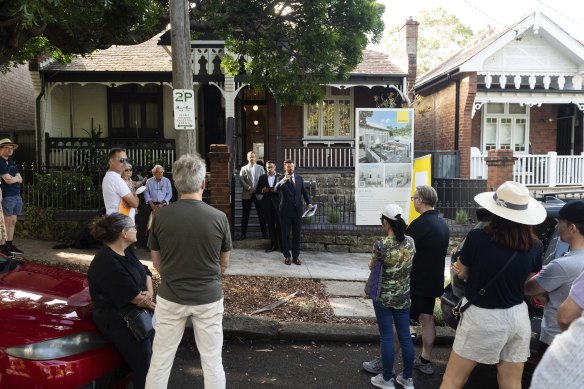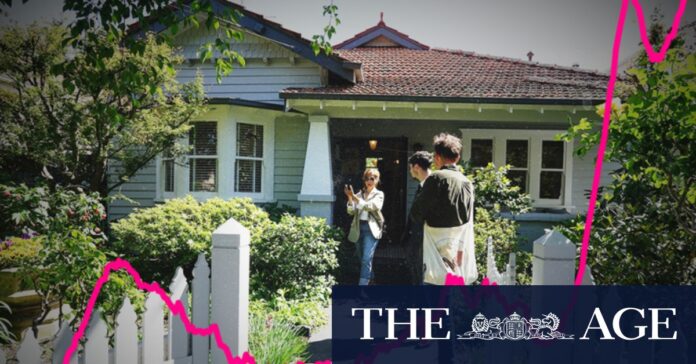[ad_1]
“If they want to be close to where their family is and where they work, the practical option is going to be buying something more high density.”
He noted the NSW productivity commissioner’s warning last week that Sydney risked becoming a city with no grandchildren if young families could not afford housing.

The price premium for houses compared with apartments has blown out.Credit: Rhett Wyman
“There’s probably a bit of reality to that unless we see a shift of preferences towards medium, higher density options.”
The gap was widest in Sydney at 68.4 per cent, followed by Canberra (65 per cent), Adelaide (58.1 per cent), Brisbane (56.3 per cent), Darwin (55.4 per cent), Melbourne (55 per cent) and Perth (49.1 per cent). Hobart was narrower at 29.3 per cent.
By suburb, many of the areas with large premiums in median house value compared with median unit value were more affluent neighbourhoods.
The largest gaps in Sydney were Bellevue Hill (more than 525 per cent) and Vaucluse (almost 500 per cent).
In Melbourne, the largest gaps by suburb were Armadale and Hawthorn at more than 350 per cent each.
“It really speaks to the underlying scarcity of land in those prestigious markets,” Lawless said.
Westpac senior economist Matthew Hassan said beyond the pandemic-era trend of home offices, recent issues with the build quality of high rises made units much less attractive.
Loading
“That’s really put buyers off,” he said. “You can see that in how units have performed across numerous subsections.
“In NSW, where the government has put in a builder rating system, there has been a flight to quality.”
Hassan said it was possible that the widening gap would prompt home buyers to reconsider the need to buy a house over a unit, as rising medians in most capital cities put an interstate move to a cheaper market further out of reach.
“They have to compromise on location, or they can compromise on the type of dwelling people seek out, and at the moment there’s only really tentative shifts in that direction,” Hassan said.
“It’s not clear where people can move to interstate, so the apartment market may get a second look.”
The Demographics Group co-founder Simon Kuestenmacher said the massive gap in prices would have consequences for families, cities and workplaces.
“Where we’re building, those are mostly greenfield sites. That means we’re moving these families out of the city and out to the fringe.
“As a self-interested Millennial family, you want a house now … you can rent for a bit longer if you can make it work but a lot of the apartments are too small once you throw in another human, a pram.”
Recent moves by businesses to wind back work-from-home flexibility will make it harder for workers to justify staying in restrictive jobs, given the unaffordability of family homes and a preference among Millennials to be more involved parents, Kuestenmacher said.
“Any move by big business to force staff back into the office will hurt them. Labour is a very limited resource and they’re risking pissing off labour. They will not quit immediately, but they will do silent job hunting,” he said.
“My word to the bosses is you need to be aware of what they’re asking people. They should know the exact dollar value it costs [their employees] to come into the office and they should know the exact amount of time they’re wasting coming into the office.”
[ad_2]
Source link


